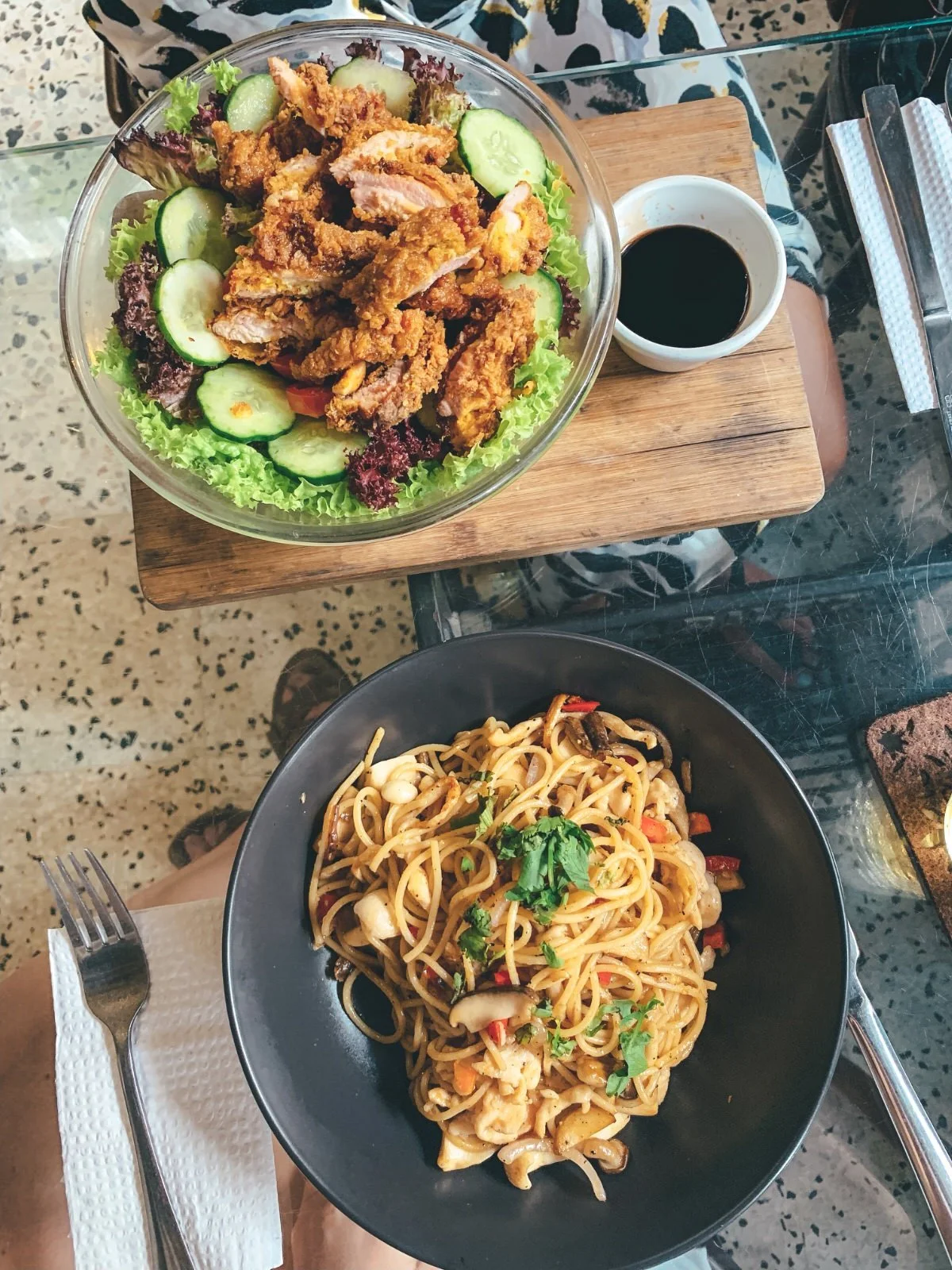City Guide: Kuala Lumpur
Words and Photography by Hannah Dace
@hannahedace
Kuala Lumpur is often compared to its neighbour Singapore (read our Singapore city guide here) – but we’d argue that they’re vastly different. KL still has a rawness to it that isn’t evident in the slick, seemingly perfect Singapore streets. Sure, there are the sky-high infinity pools, cloud-scraping twin towers, and flashy shopping centres, but there’s a storied history here, too. Chinatown, filled to bursting with fake Kankens, is worlds apart from the multicoloured steps of Batu Caves and the treetop rainforest walk at the eco park. This is an eccentric city where Malay, Chinese, Indian, Buddhist and Hindu influences meet. Here’s how to explore…
where to stay
If you’re looking to satiate your sky-high infinity pool desires, then FACE Suites are just the place. Find them on Airbnb – there are plenty of options in the building to fit all budgets. I stayed in a high-floored one-bedroom apartment for around £20 a night, which was open-plan, had full-length windows framing the city, and a lovely walk-in shower. The rooftop is, naturally, the draw – the infinity pool and sunbeds boast vistas of the entire city with the twin towers to your left and the KL tower to your right. It’s a pretty ridiculous place to get a tan.
By way of hotels, we like The Chow Kit on the edge of the former red-light district, the Ruma Hotel & Residences in the centre of the Golden Triangle, and Villa Samadhi – a zen-inducing hidden bolthole in the leafy embassy district. Book through Mr & Mrs Smith for added niceties including cocktails, treatments, and canvas bags.
what to do
Let’s start with leg day, Kuala Lumpur style. Batu caves and the rainbow steps are an iconic KL attraction (so get there early to avoid the crowds and the heat!). 272 steps lead up to the monkey-run caves and sacred temple – keep an eye on your shiny things as the little guys are well known for their pick-pocketing. You can reach the rugged Batu caves by bus or Grab, which is very reasonably priced in KL.
As with many big cities, views are central to tourism in Kuala Lumpur. Rather than fighting the hordes at the Petronas Towers’ sky bridge, we’d recommend scaling the Menara KL Tower – sure, it can still get busy, but the view from here is the best of the lot. Those who like heights can even stand in glass boxes jutting out from the tower 420 metres above ground. Come sunset, the Helipad lounge bar is the place to head – in fact, this is one of our favourite bars of all time, given its city-centre location and incredible views. KL Forest eco park also gives some altitude – the hanging bridges link viewpoint to tree, tree to viewpoint. Just make sure you lather on the mosquito spray…
But back down to street level, which happens to be one of the best places to get a real feel for the city. Boisterous markets, pavement-hugging durian stalls, and boutique cafés line the streets. Retail is an important part of the culture here, so take your pick from all-bells-and-whistles Suria KLCC mall, the boutiques of Bangsar, or the street traders in Chinatown’s Petaling Street. Wandering the many districts and exploring their hidden corners is one of the best ways to get to know the real Kuala Lumpur.
where to eat
Kuala Lumpur’s culinary scene is impressive, especially if you’re keen to try a huge range of dishes. Nirwana Banana Leaf Bangsar was a personal favourite from my trip, with heaps of curry, rice and veg served on open banana leaves. Jalan Alor and Pudu Wai Sek Kai are the noteworthy food streets come dinner time. Kanna Curry House on Jalan Alor serves white rice with chicken, mutton or fried fish curry (but you’ll find tasty street food at most of the hawker stalls along here, amid the throngs of people); authentic Malaysian street food can be found at Pudu food street between 4pm–midnight every day. If you’ve reached your limit on local food, try Halab – a middle eastern restaurant where small plates of crispy falafel, tender grilled chicken, and creamy hummus are designed for sharing.
Artisan Roast Coffee and Antipodean Café are good for caffeine fixes – and the latter is known for its Aussie-inspired brunch, too. Feeka Coffee Roasters, in a line of converted townhouses in Bukit Bintang, serves good coffee, hearty pancakes and generously filled sandwiches. Leaf & Co. is a welcome respite from Chinatown’s busy streets – the café-cum-restaurant is one street away from the market but has all the air con and Malaysian-fusion lunch dishes your heart could desire. Try the passionfruit mojito, which comes with an upturned ice lolly inside.






